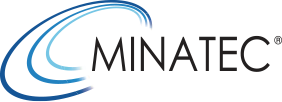News : Engineering sciences
January 01 2023
Ultrasonic predictive maintenance
As part of the development of its research activities on sensor networks and predictive maintenance, the Autonomy and Sensor Integration Laboratory (DSYS/SSCE/LAIC) of CEA-LETI in Grenoble, France, is offering a thesis on “Ultrasound-based predictive maintenance”. Ultrasound emission is one of the first signs of ageing in an industrial system, before the appearance of vibrations, noise […] >>
January 01 2023
Opto-microfluidic system for ultra-sensitive quantitative analysis: application to the diagnosis and monitoring of cardiovascular diseases
The DTBS at Leti develops new technologies to invent tomorrow’s medical diagnostic and therapeutic innovations in collaboration with public hospitals and universities. Inside this department, the LSMB lab gathers a multidisciplinary team to design and produce microfluidic systems for healthcare and biology applications. In collaboration with researchers from IRIG, the lab has set-up an innovative […] >>
January 01 2023
Modelling of device aging for energy conversion : toward predictive maintenance of power converters ?
The conversion of electrical energy is currently a major issue within our societies, whether to reduce losses, to allow the integration of a maximum of renewable energy from wind or solar power or to have cleaner mobility (electric vehicles, whatever their size, individual or collective), in industry as well as in the residential sector. The […] >>
January 01 2023
Inductor less DC/DC isolated converter
The aim of this thesis is to design high-efficiency power converters based on resonating piezoelectric transducers. A large part of the work is to develop the electrical cycle able to energetically maintain the piezoelectric resonator in resonance and ensure zero-voltage switching, for electrical energy transfer from the source to the piezoelectric resonator or from the […] >>
January 01 2023
Ferroelectric Tunnel Junctions for neuromorphic applications
The recent discovery of HfO2 ferroelectric properties generates a strong interest for novel non-volatile memory technologies. Among them, HfO2-based Ferroelectric Tunnel Junctions (FTJ) are resistive memories in which the electronic transport, and thus the device conductance, is modulated by the orientation of ferroelectric dipoles within the HfO2 layer. Actually, HfO2-based FTJs are envisaged for mimicking […] >>



 Contact us
Contact us How to find us
How to find us







